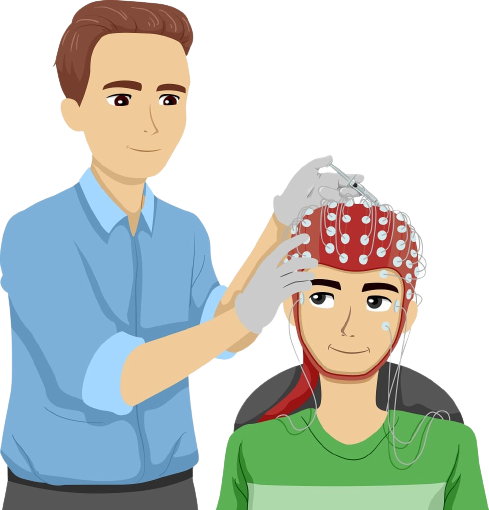The following case histories may have useful implications for neurofeedback because they imply possible clinical effectiveness with immune disorders, anorexia, and obsessive, compulsive disorders. In addition the neurofeedback timing strategies used suggest that the length, frequency and total number of sessions may be as important in achieving best neurotherapy results as titration is in the administration of medications.
A Dangerous Obsession
He had reached an advanced stage of anorexia. As a 54 year old construction worker, he was normally 6′ and a well muscled 155 lbs. At the beginning of therapy he was 118 lbs., eyes sunken, somewhat manic, claiming his diet of mostly lettuce was making him high and filling him with energy. He was almost completely isolated as his behavior had destroyed his marriage and alienated him from his friends. He had not worked for five years at his trade as he was on disability. He was almost broke even though he earned between sixty and one hundred thousand per year when he was working. He was obsessed with a well known cult which had counseled him to distance himself from his family, and against seeking therapeutic help. He had invested over $200,000.00, virtually his life savings, in the cults system of “therapy and enlightenment.”
He discussed the possibility of suicide on several occasions in the beginning and was experiencing many stress related disorders including sleeplessness, irritability, hyperactivity, intense loneliness, and much obsessive/compulsive symptomology including going over and over often unimportant details. He fluctuated between overtly aggressive, hyper behavior as he tried to convert people to his ideas, and passively aggressive behavior when individuals attempted to establish relationship with him. A strong concern at the beginning of therapy was that irreversible organ damage might have already occurred because of his complexion, gaunt, haunted appearance and the obviously massive loss of muscle tissue, even though he continued to exercise vigorously (as is the case with many anorexics). Biofeedback therapy was for him a desperate last resort.
Within three weeks of beginning neurofeedback training (adjunctive to counseling) his demeanor had changed remarkably, he had begun to gain weight and he entered enthusiastically into the life rebuilding process. He began sleeping better, felt much calmer and more optimistic, less lonely and isolated. He began to form new relationships and he was opening up and talking to people in ways that were impossible before. He wanted to report on his “Love Stories”. An interesting example follows: He would go to playgrounds and sit and watch children play. This made him feel so happy at times that he would weep. This appears to be healthy abreactive phenomena happening hours or days after actual neurofeedback training. People he met or had known before seemed to be easier to be with. He saw that he had changed and was giving others the chance to be affectionate and not blocking them with his rigidity, restlessness and passive aggression. He began to eat a more balanced diet and gained weight reaching 150 lbs. within the first year.
More Info Click Here : Neurofeedback Technician Training



